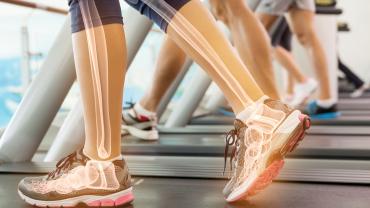
Changes to bone integrity may occur throughout adulthood as a result of some modifiable and nonmodifiable risk factors; these include aging, certain concurrent illnesses, and genetics. Lifestyle factors such as physical activity and nutritional intake are thought to play a critical role in bone health, influencing as much as 20% to 40% (as measured in mean variance of adult peak bone mass). Vitamin D status is one of the key lifestyle factors that may help maintain bone health and integrity.
A recently published systematic review and meta-analysis by Sohouli and colleagues explored the efficacy of vitamin D supplementation on bone health. A total of 42 randomized controlled trials (RCTs) were included in this study. Bone turnover markers were evaluated in these RCTs, with study durations ranging from 4 to 144 weeks. Upon subgroup analysis, the authors report notable reductions in alkaline phosphatase (ALP) levels in studies that lasted longer than 12 weeks. ALP is a nonspecific marker used to assess bone turnover. Reductions in ALP levels were greater in individuals with kidney or liver diseases. The liver and kidneys are involved in critical steps in vitamin D metabolism and lowered vitamin D status is common in these populations.
The bone turnover marker procollagen type 1 N-terminal propeptide (P1NP) has been recommended as a reference marker for fracture risk evaluation by the International Osteoporosis Foundation. In their meta-analysis, Sohouli and colleagues reported that the greatest improvements in serum P1NP levels occurred in individuals over the age of 50. As we age, our ability to metabolize vitamin D efficiently decreases. When compared to younger adults, elderly individuals have been shown to experience 50% reductions in the skin’s ability to convert vitamin D to its bioactive form.
Other bone turnover markers such as cross-linked C-telopeptide (CTX) and osteocalcin were not reported to change significantly upon meta-analysis. Osteocalcin is a relatively unstable molecule with a short half-life and may generally be difficult to assess. In addition, other factors including vitamin K status and kidney function may also influence osteocalcin levels.
A drawback to this study is the inclusion of RCTs involving both vitamin D2 and D3 as interventions. Vitamin D3, also known as cholecalciferol, is the most active form of supplemental vitamin D. Evidence suggests that supplementation with vitamin D3 can be more effective at raising and maintaining vitamin D levels in the body than vitamin D2.
Vitamin D can be obtained from sun exposure, supplementation, and dietary sources such as fatty fish including salmon, beef liver, egg yolks, mushrooms, and fortified foods.
By Dr. Cory Ambrose, ND, MAT